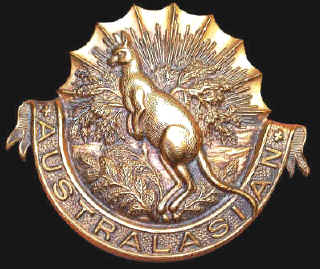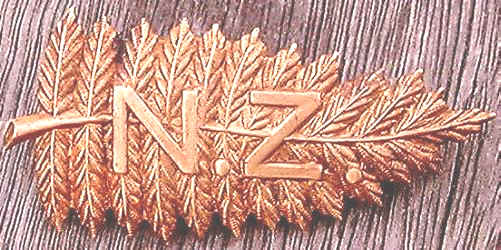 |
| Category: Assorted |

|
|
|
|
|
|
4th County of London (King's
Colonials) Imperial Yeomanry |
 |
Origin - In
the year 1901, at a time when the Boer War was still dragging on and the
British home garrisons were cut to the bone, a decision was made to raise a
Yeomanry Regiment from overseas volunteers in order to bolster the home
defences.
This resulted in November 1901 with
the formation of the grandly titled:-
4th County of London
(King's Colonials)
Imperial Yeomanry |
 (Definition)
imperial yeomanry (Definition)
imperial yeomanry
Yeomanry \Yeo"man*ry\, n. A British volunteer
cavalry force, growing out of a royal regiment of fox hunters raised by
Yorkshire gentlemen in 1745 to fight the Pretender, Charles Edward. The
members furnish their own horses, have fourteen days' annual camp
training, and receive pay and allowance when on duty. In 1901 the name
was altered to Imperial
Yeomanry in recognition of the services of the force in the Boer
war. |
- The Regiment originally consisted
of four (4) Squadrons:-
- A. Squadron - British Asians, (mostly
Indian) whose Squadron badge depicted a large Elephant.
- B. Squadron - British Americans
(actually Canadians) whose Squadron badge showed a beaver
chewing a branch set against a maple leaf.
- C. Squadron - Australasian, (Australian
& New Zealanders) whose Squadron badge was a kangaroo and tree fern set
against a rising sun.
- D. Squadron - British
African,
(South African & Rhodesian)
who wore as a Squadron badge, an Ostrich set against a
rising sun.
- Note 1: There were very few New
Zealanders living in UK in 1901 so the term "Australasian " was used to include New Zealanders in
"C" Squadron.
- Note 2: This old English word Australasian,
now rarely used, means, according to the Collins Dictionary,
"of Australia, New Zealand and neighbouring
Islands".
|
 |

|
|
A Sqn King's Colonials
(British-Asians i.e. Indians) |
B Sqn Kings
Colonials (British American i.e.Canadians) Image F Green
|
|

|

|
|
C Sqn King's Colonials
(Australia version 2). Image Frank Green |
D
Sqn King's Colonials (British African i.e.
South Africans and Rhodesians) |

|
5th Squadron (New
Zealand) the King's Colonials.
|
1903 -A fifth (5th) Squadron was
formed in 1903 to accommodate the, by then, increased numbers of New
Zealanders living in the UK. Their Squadron badge consisted of a single
fern leaf
(see above). Accordingly, C Squadron's badge was re-issued to display just
the Kangaroo above a title bar reading "Australia". See
above left.
 |
Sterling silver oak
leaf badge possibly from the 5th Sqn Kings Colonials |
1904 -Although I can't find a
reference as to why, the New Zealand Squadron was disbanded in 1904. |
 |
<<< King's
Colonials shoulder title |
 |
 |
|
Collar badges of A
Squadron |
King's
Edward's Horse, King's Overseas Dominions Regiment shoulder title |
|
The original King's Colonials wore a
strange head-dress, best described in "Kipling & King Volume 1", as a tall felt hat rather like an inverted flower pot with a
broad brim turned up and fastened to the left of the crown.
This
flamboyant head-dress, probably the first true slouch hat, bore a
plume of scarlet feathers at the front and three cap badges.
|
 |
In addition to the Squadron badges,
described above, which were worn on the front of the hat band, a
Regimental badge in the form of the British Coat of Arms (St Edward's
Crown) above
a title scroll reading "The King's Colonials" in brass, was
worn at the top front of the crown.

To complete the trio, a badge
displaying the initials "KC" below the Prince of Wales plumes,
coronet and motto in brass, was used to secure the turned up left brim.

|
|
1905 - In 1905, the regimental title
was shortened to the more simple "King's Colonials Imperial
Yeomanry" and a less flamboyant head-dress was introduced in the
form of a slouch hat with a lower crown bearing, on the left side turned
up brim, a bunch of black cock feathers and a single smaller version of
the "KC" monogram badge.
1909 - In 1909, due the Crown Colonies
having gained Dominion status, the term "Colony Squadrons" was
abolished and of a consequence, the Squadron badges were made redundant.
All ranks now wore the smaller "KC" badge on the slouch hat
and the newly introduced khaki service-dress cap.
1910 - Following the death of King
Edward VII in 1910 it was decided that, due to the self governing
dominions dislike of being referred to as colonials, the regiment be
renamed:
|
|
King Edward's Horse The
King's Overseas Dominions Regiment |
 |
This led to the
regiment being commonly referred to by the initials KODR. A new
badge was issued in White Metal depicting wreaths of oak and
laurel carrying the scrolls: Canada, Australia, New Zealand, S.Africa
and India above a title belt inscribed "KODR"
1914/1918 - During the First
World War, the regiment served in France, Italy and Ireland but
sadly to relate, due to the increasing mechanisation of warfare
were often relegated to the role of mounted divisional messengers.
This led to the Infantry soldiers, always ready to take the Mickey
out of the mounted regiments, insisting that KODR stood for
"the Kings Own Despatch Riders".
1924 - The "King Edward's
Horse" was officially disbanded in March 1924.
Frank Green |
|
1st & 2nd King
Edward's Horse
|
|
Now
a cavalry regiment of the Special Reserve (UK)
1st
King Edward's Horse
August
1914 : in Chelsea. Temporarily attached to 4th Cavalry Brigade.
In
April 1915, the regiment was split up.
A
Squadron (Asians)
was attached to 12th
Division in May 1915, but moved to join IV Corps in June 1916.
B
Squadron (Canadians)
moved to France on 22 April 1915, and joined 48th
(South Midland) Division, but moved to join IV Corps in June 1916.
C
Squadron, (Australasian)
together with HQ, moved to France on 22 April 1915, and
joined 47th (London)
Division, but moved to join IV Corps in June 1916.
The
three Squadrons moved from IV to XVIII Corps in July 1917, returning
to IV in November 1917. (This Corps then moved to Italy).
In March 1918, the Squadrons moved back to France with XI Corps. In
May 1918, A Squadron stayed with XI Corps, while B went to I and C to
XIII.
 |
2nd
King Edward's Horse
Formed
in London in August 1914. Joined the Eastern Brigade in 1st
Mounted Division in December 1914.
Left to join Canadian Cavalry
Brigade in March 1915, and moved to France as a dismounted unit 5 May
1915.
-
On the badge,
note the
-
the addition of
"2nd"
-
removal of the Crowned
Lion
-
the badge is
brass, not whitemetal
-
it is of a slightly different
shape
|
|
|